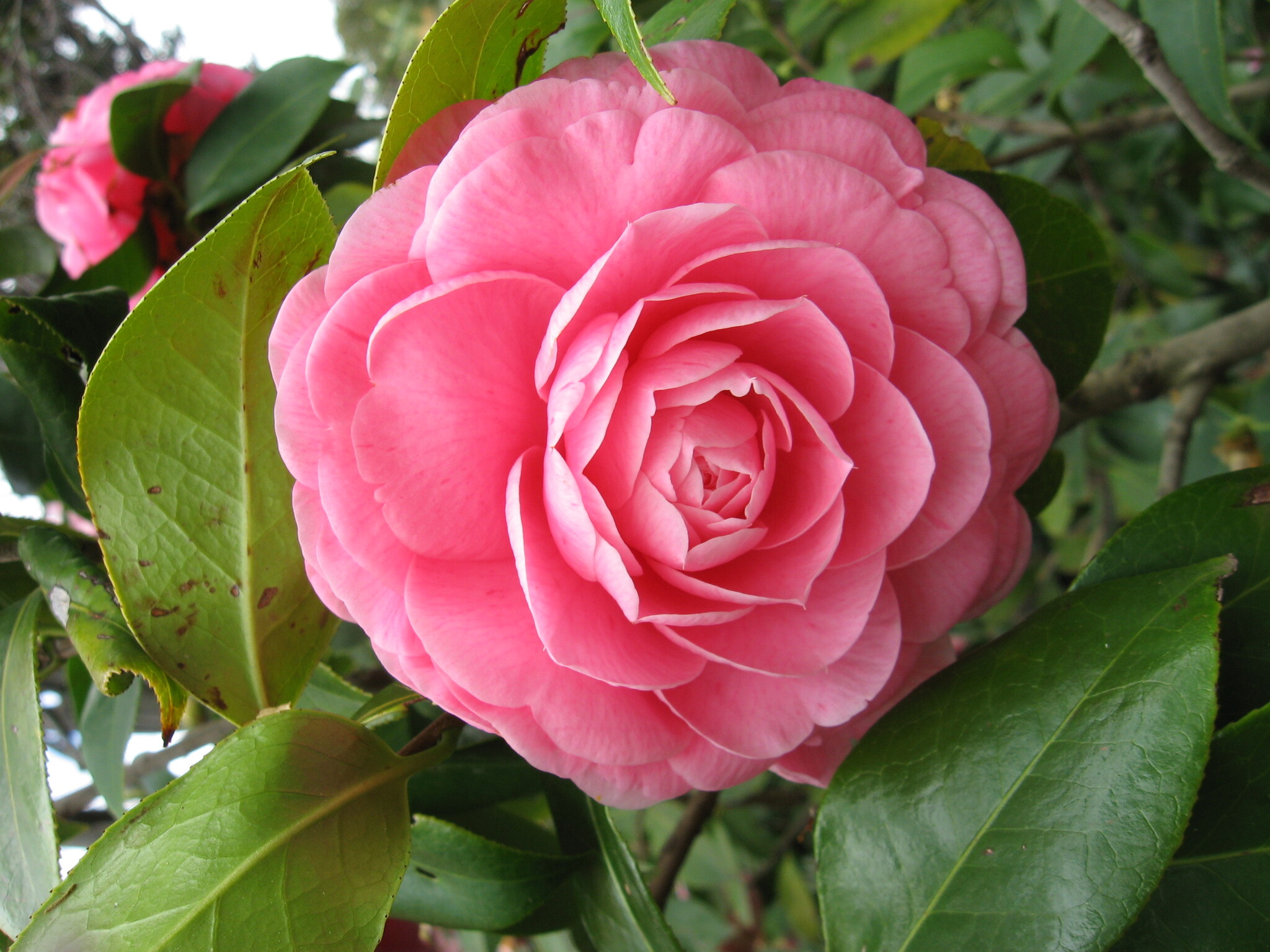
Trees, shrubs or occasionally scrambling vines. Leaves mostly alternate, usually evergreen, leathery; stipules absent. Flowers usually bisexual, regular and solitary, occasionally in clusters. Sepals 4-7, united at the base. Petals 4-many. Stamens numerous, free or in fused bundles. Carpels usually 3-5, united at the base. Ovary superior, rarely half inferior, each chamber with 2-many ovules; placentation axile. Styles as many as chambers, free or partially united. Fruit a capsule, berry or achene with sepals persistent at the base; seeds 1-many, sometimes winged.
Franklinia alatamaha Marshal, Franklin's Tree from North America is occasionally grown; the leaves are deciduous and the almost stalkless flowers appear in mid to late summer. In cool districts the leaves colour well in the autumn. Probably extinct in the wild.
Cuttings of new growth and by grafting on to suitable rootstock.
Commercial tea is obtained from Camellia sinensis while C. sasanqua is the source of tea-seed oil.
29 genera and about 600 species mostly tropical and subtropical chiefly America and Asia (1 species native to Australia, Ternstroemia cherryi).
Source: (1997). Theaceae. In: . Horticultural Flora of South-eastern Australia. Volume 2. Flowering plants. Dicotyledons. Part 1. The identification of garden and cultivated plants. University of New South Wales Press.
